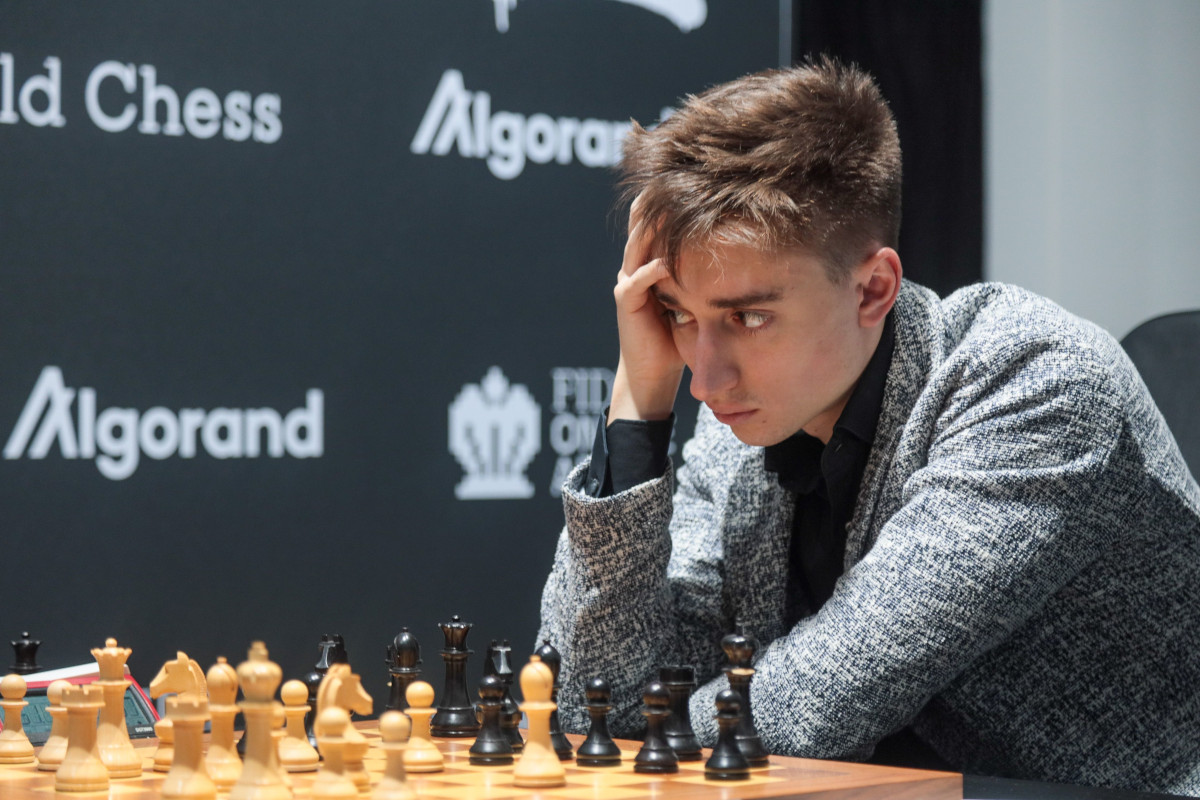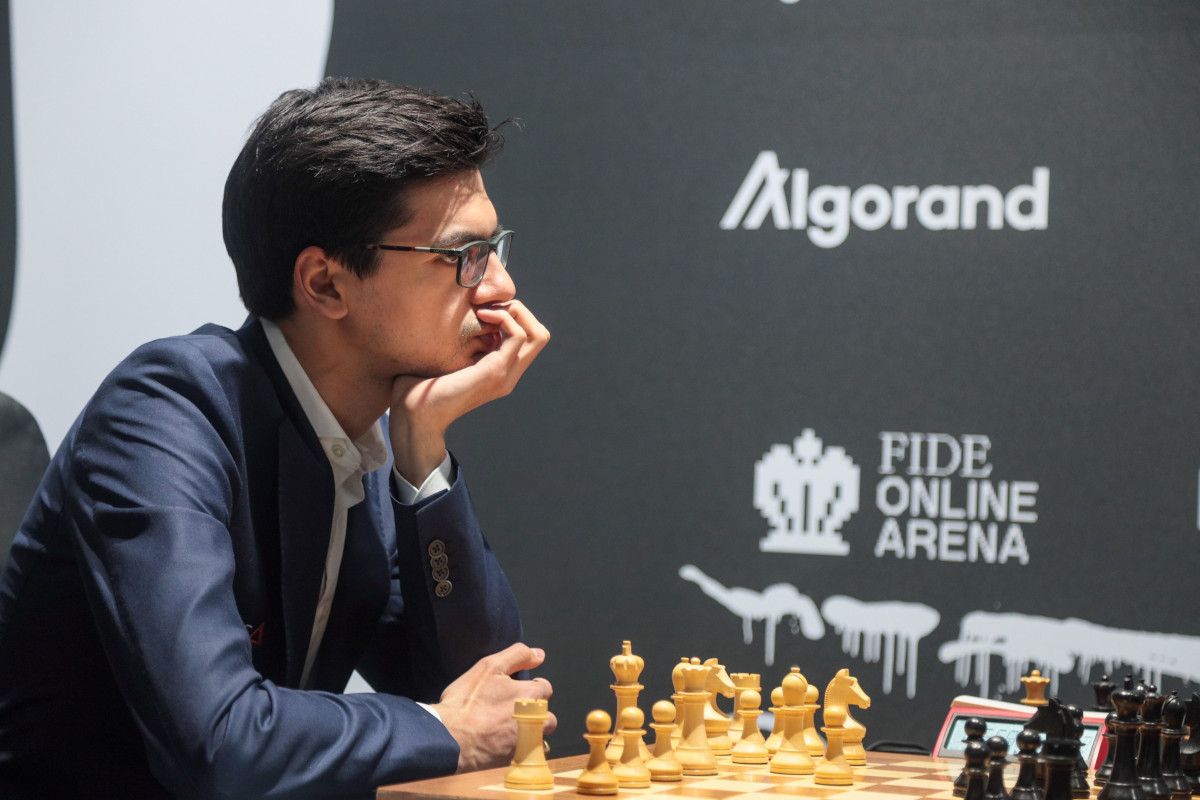


 Hikaru Nakamura, Levon Aronian, Anish Giri, Leinier Dominguez and Maxime Vachier-Lagrave entered the third stage of the Grand Prix with the best chances of getting a spot in the Candidates Tournament — with Belgrade-leg winner Richard Rapport almost certain to get the other ticket granted by the series. Halfway through the preliminary stage in Berlin, where most games have ended in draws, the situation has not been much clarified.
Hikaru Nakamura, Levon Aronian, Anish Giri, Leinier Dominguez and Maxime Vachier-Lagrave entered the third stage of the Grand Prix with the best chances of getting a spot in the Candidates Tournament — with Belgrade-leg winner Richard Rapport almost certain to get the other ticket granted by the series. Halfway through the preliminary stage in Berlin, where most games have ended in draws, the situation has not been much clarified.
Aronian is leading pool A, but has Grigoriy Oparin and Andrey Esipenko standing a half point back, while Dominguez is now sharing first place with Vincent Keymer in pool B. Vachier-Lagrave is the one most in need of getting good results as quickly as possible, as he lost to Alexandr Predke in the first round of the event.
After all eight games finished drawn in round 2, we got to see one decisive result in Thursday’s third round. Keymer, who came for defending stubbornly to salvage a half point against Dominguez, got the better of Daniil Dubov. The German grandmaster had the white pieces and outplayed his opponent in a complex middlegame position. True to his style, Dubov had entered a suspicious, double-edged line.
The other highlight of the day was seen in pool A, where Oparin got a clearly better position against Nakamura. The Russian played enterprising chess in the early middlegame, but failed to find an effective way to finish off his opponent amid the complications. Naka not only survived the first onslaught against his king, but also kept his cool to hold the balance while still in an inferior position once the dust had settled.

Grigoriy Oparin
In a risky attempt, Hikaru Nakamura tried the King’s Indian Defence against Grigoriy Oparin after years of not having played the double-edged opening as his main weapon with the black pieces. The plan backfired, as the Russian proved to be well-prepared and got a strong initiative on the kingside.
White has pushed his h-pawn down the board, and can now create strong threats against the opposite king by permanently damaging Black’s pawn structure via 19.Bxg6. The idea is that after 19...fxg6, which is the strongest reply in the position, White can infiltrate with 20.Qe7, when Black will need to return some material to deal with the deadly threat of Bf6.
Nakamura’s 19...Nxd5 seems to tackle the problem head on, but is in fact a blunder. As the US grandmaster later confessed, had Oparin found 20.Bb1 he would have probably resigned, since Black’s position is completely lost.
The Russian opted for 20.Bxh7 instead, when 20.Bf5 is even stronger than Naka’s suggestion.
Of course, going for yet another sacrifice while further damaging Black’s kingside is very tempting, but both suggested retreating moves were called for at this point.
Nakamura quickly grabbed the piece with 20...Kxh7, and somewhat stabilized his position via 21.Qc2+ f5 22.cxd5 Be5
White is still a pawn up, but Black has the bishop pair and has successfully dealt with his opponent’s initiative on the kingside.
As he has shown throughout the series, after a long hiatus from over-the-board classical games, Nakamura is still a proficient defender. In the following phase of the game, he played precise moves until reaching a position in which his opponent correctly agreed to enter a repetition and split the point.
It was a narrow escape, but one that keeps Naka well in the fight for first place in this group.
In the one group that has seen two decisive results in the first half of the preliminary stage, Vincent Keymer and Leinier Dominguez have both defeated Daniil Dubov to share the lead on 2/3 points.
Out of a Queen’s Gambit Accepted, Keymer and Dubov both spent relatively large amounts of time in the opening phase. The ever-creative Russian riskily placed his knight deep into his opponent’s camp.
18...Nd3 is bound to create a sharp struggle in the middlegame. White will try to undermine Black’s far-advanced piece, but to do so he will need to manoeuvre around the knight’s massive sphere of influence in his own camp. Needless to say, Dubov could have gone for more ‘sensible’ moves, such as 18...Bxe4 or 18...cxd4, but the 25-year-old Muscovite is not one to take the safer routes very often.
After 19.Ned2 Bxf3 (19...Ba6 is better) 20.Nxf3 Nb6 21.b3, Black faltered with 21...Nd5
Again Dubov went for a tactical solution, when 21.cxd4 or 21...Nb4, retreating, were better alternatives in the position.
Keymer’s 22.bxc4 meant both knights were simultaneously under attack. Dubov counted on 22...N3f4, but the manoeuvre failed to 23.Bd3
A strong reply. Now 23...Nxd3 is bad due to 24.cxd5, threatening d6, while Dubov’s 23...Rb8 was responded by the zwischenzug 24.Bxh7+ — Keymer had seen further in his calculations!
Black’s adventurous play had been refuted by the young German, who went on to show good technique to convert his advantage into a well-deserved 37-move win.

Daniil Dubov
In a group that has the lowest-rated player in the lead, US grandmasters Wesley So and Sam Shankland have yet to play a decisive result in the tournament. Shankland managed to gain a pawn against Alexandr Predke in round 3, but it was not enough to get a full point in the end.
Predke’s 36...Rc2 was not as accurate as 36...Rc4, but finding a way to win with White in these kinds of rook endgames is never easy. The players agreed to a draw on move 57.
Remarkably, Anish Giri, Nikita Vitiugov and Amin Tabatabaei were all seeded in the same pool in two consecutive tournaments. In Belgrade, Giri beat both the Russian and the Iranian to get first place in the group, while this time around only Vitiugov has managed to score a full point in the first three rounds of the event.
On Thursday, out of a Sicilian, Vitiugov found a nice way to force a draw against the rating favourite in the pool.
26...Rxb2+ Kxb2 27.Qc3+ Kb1 28.Qc2+ Ka1, and the king cannot escape the checks. Draw.

Anish Giri